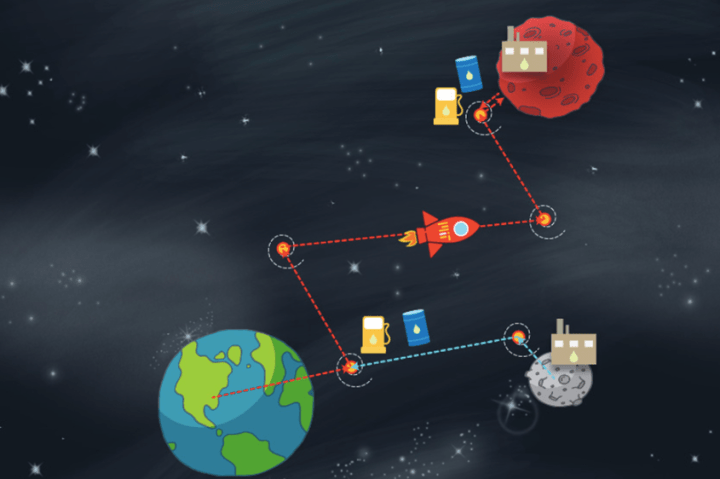
Instead of following the traditional carry-all approach that requires a crew to bring all the items they need, the MIT team worked off the idea of in-situ resource utilization, which relies on the production and collection of supplies such as fuel, water and oxygen during a trip. Even though it requires an extensive infrastructure to build a supply network in space, the MIT researchers believe the investment will pay off in the long run, especially when traveling between the Earth and Mars becomes routine. “Most of the benefits come from a 68 percent reduction in the launch mass of a vehicle, which could save NASA $5.8 billion per mission,” said Olivier de Weck, MIT professor of aeronautics, astronautics, and engineering systems; and also the paper’s second author.
The MIT plan would have any Mars-bound spacecraft to take a detour to the moon instead of heading straight for Mars. This detour would take the vessel to the Earth-moon libration point 2 (EML-2), an area where the the combined gravitational pull of the Earth and moon cancel each other out, creating a parking area for spacecraft. This space-based depot would provide fuel created by a facility on the surface of the moon that would generate propulsion fuel from lunar soil and water ice deposits in select moon craters. Other operational hardware would include “a propellant depot, a reusable lunar lander, a propellant tanker, and an orbital transfer vehicle with aerobraking capability.” Following its first pit stop to refuel, the vehicle would then stop at additional outposts strategically placed along the route to Mars.
The “moon as a space outpost” is not an idea from the pages of science fiction. While other scientists have hinted at using the moon in such a way, even NASA has explored the idea of using EML-2 as an outpost. According to the authors, the MIT study is the first one to prove mathematically that a moon-based rendezvous may provide the optimal route to Mars.



